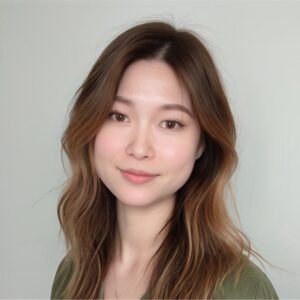
Specialized prospect research tools make the process of finding new donors faster, more accurate, and easier to scale. They turn raw data into actionable insights about potential donors’ capacity to give, affinity for your cause, and likelihood to contribute. This allows your team to focus on the right prospects and maximize major gift, legacy, and campaign fundraising.
Best prospect research tools
The right prospect research tool will help you identify high-capacity donors quickly and accurately. This is essential for your nonprofit’s long-term viability, considering that almost half of the dollars donated by individuals tend to come from less than 1% of a given organization’s donor base. The situation is similar with grants.
Each prospect research tool serves specific nonprofit sizes and goals. The following are the top platforms on the market.
1. iwave
iwave is a comprehensive prospect research software designed in collaboration with experienced fundraisers to meet the needs of nonprofits that prioritize accuracy and strategy over volume. It aggregates data from over 44+ vetted sources into unified 360° donor profiles. Many of those sources are premium, subscription-based databases that would be expensive for nonprofits to access alone.
iwave blends wealth, philanthropic, business, and relationship indicators to create context-rich insights. Its AI-powered scoring customizes capacity, affinity, and giving propensity measures to your nonprofit’s requirements. This enables your fundraising team to prioritize prospects and uncover meaningful connections before outreach.
Strengths:
- VeriGift’s comprehensive database with 200 million+ charitable gift records
- Verified premium data sources, including ZoomInfo, Dun & Bradstreet, DatabaseUSA, Refinitiv, Insider Filings, and RiXtrema Prospects of Wealth
- Live donor profiles with real-time alerts on donations, real estate transactions, and insider filings
- Custom predictive and look-alike modeling to identify and prioritize high-potential prospects
- Relationship mapping to identify personal and board connections for warm introductions
- Integrates smoothly with major CRMs like Salesforce, Neon, and DonorPerfect
- Flexible pricing options: pay-per-use and subscription plans
- Ranked #1 donor research platform on G2 for 17 consecutive quarters, and has received three Titan Business Awards and three Stevie Awards
Not a quick fix
iwave isn’t a one-click list generator. It’s designed for fundraising teams that value accuracy, customization, and strategic depth over speed or volume.
Ideal users:
- Organizations prioritizing high-quality, actionable data over quick list-building
- Nonprofits seeking precise donor intelligence to secure major gifts and legacy contributions
- Development teams focusing on strategic outreach and long-term donor relationships
2. DonorSearch
DonorSearch is a wealth screening tool that prioritizes philanthropic giving data. It’s a popular entry-level option for small to mid-sized nonprofits seeking to identify and segment potential donors based on their past charitable activity.
DonorSearch bases its models on the idea that past giving is the best predictor of future generosity. Its focus is on high-volume list generation, rather than deep profiling. This makes it especially useful for organizations wanting to build out top-of-funnel pipelines quickly.
Strengths:
- Comprehensive database of charitable giving, political contributions, real estate, and employment information
- Predictive AI scoring designed to surface likely donors and score them by giving potential
- Batch screening capability for fast, large-scale prospect list generation
- Integration with popular CRMs like Salesforce, DonorPerfect, and Neon
- Customizable search parameters and screening filters to match different fundraising campaigns or appeals
- Pricing tiers designed for small and mid-sized nonprofits
Limitations
DonorSearch focuses on giving history pulled from public records, rather than real-time asset data or comprehensive wealth profiling. While useful for top-of-funnel donor prospecting, it lacks advanced features like live profile monitoring, integrated research workflows, and granular insights into capacity and affinity. Its volume-based approach typically produces broader lists without the depth needed for highly personalized outreach.
Ideal users:
- Small to mid-sized nonprofits wanting a fast, affordable way to screen donor prospects based primarily on giving history and basic wealth signals
- Teams relying on CRM-driven batch prospecting or looking for simplicity over real-time portfolio insights
3. WealthEngine
WealthEngine is a wealth screening platform designed to help organizations identify high-net-worth individuals using detailed financial data modeling. It’s best known for providing insight into donor wealth through indicators like real estate holdings, stock ownership, lifestyle markers, and estimated net worth.
The WealthEngine platform is built for high-volume donor prospecting. It supports enterprise-scale fundraising through predictive wealth scores, audience segmentation, and custom modeling capabilities that help fundraising teams prioritize potential major donors efficiently.
Strengths:
- Deep financial intelligence coverage, including income, assets, and lifestyle indicators
- Predictive wealth scores and customizable modeling tools for prospect prioritization
- API and Salesforce integration for CRM-aligned, automated prospecting workflows
- Tailored for enterprise-level organizations targeting ultra-high-net-worth individuals
- Supports high-volume donor segmentation for national and global fundraising teams
Limitations
WealthEngine focuses primarily on wealth capacity over charitable behavior. It offers limited visibility into donor engagement, giving history, and mission alignment. Users report a dated user interface, and its data refresh cycles are slower compared to newer cloud-based platforms.
CRM integration options beyond Salesforce are limited. The pricing is enterprise-level and often exceeds the budgets of small to mid-sized nonprofits. For organizations seeking a balance of wealth and philanthropic indicators, WealthEngine will require supplemental tools to get a complete picture of donor potential.
Ideal users:
- Enterprise-level nonprofits and financial institutions focused primarily on high-net-worth donor segmentation
- Major gift programs that rely on detailed asset data rather than charitable engagement metrics
4. Instrumentl
Instrumentl is a grant discovery and management platform designed specifically for nonprofits that are focused on grant funding. It streamlines the process of finding, tracking, and managing grant opportunities in one centralized workspace, reducing administrative workload and helping teams stay organized.
Strengths:
- AI-driven matching recommends relevant grants aligned with the organization’s mission, past funding, and current initiatives
- Automated deadline tracking and reminders help ensure no important submission dates are missed by the fundraising team
- A centralized workspace lets teams collaborate easily, assign tasks, and manage multiple grants from one dashboard
- Provides access to foundation profiles and 990 reports, helping nonprofits analyze historical funding trends, identify potential grant makers, and tailor proposals to align with funder priorities
- Easy-to-generate reports that enable nonprofits to provide transparent updates to boards and stakeholders, supporting accountability and strategic planning
Limitations
Instrumentl focuses solely on grant funding and doesn’t provide donor wealth or philanthropic data. It lacks tools for major donor prospect research or donor segmentation, so it’s not a comprehensive fundraising solution.
Ideal users:
- Small to mid-sized nonprofits with active grant-writing teams looking for an integrated, user-friendly platform for grant discovery and management
Tip: Organizations needing comprehensive fundraising support should pair Instrumentl with a donor prospect research tool to cover both grant discovery and donor intelligence.
5. Windfall
Windfall is a wealth screening platform designed to help nonprofits identify and prioritize high-net-worth donors. It specializes in household-level data, offering precise net worth estimates and insights into financial behaviors.
The platform uses deterministic algorithms and a range of verified data sources to calculate household net worth. It surfaces key wealth indicators like liquidity events, real estate holdings, and career intelligence. These insights support smarter segmentation and targeted major gift outreach.
Strengths:
- Uses proprietary algorithms to deliver accurate household net worth estimates
- Identifies wealth signals such as real estate ownership, career data, and liquidity events
- Includes predictive tools to rank prospects by giving potential and net worth trends
- Integrates with leading CRMs like Salesforce, EverTrue, and Bloomerang for streamlined workflows
Limitations
Windfall focuses almost exclusively on financial capacity. It doesn’t include giving history or mission alignment insights, and lacks built-in affinity or propensity scoring. For organizations that rely on well-rounded donor profiles, Windfall will need to be paired with a more comprehensive research tool.
Its narrow focus makes it a strong choice for major gift fundraising but less useful for organizations pursuing a broader donor pool or running annual major campaigns. And because the tool is built for high-value targeting, it will be overkill for general prospect lists.
Ideal users:
- Mid-size to large nonprofits and institutional fundraisers with dedicated fundraising teams
Tip: Windfall is ideal for refining high-net-worth prospect lists, but isn’t a full replacement for tools with deeper philanthropic intelligence and research capabilities.
6. Blackbaud (via Raiser’s Edge NXT)
Blackbaud’s built-in prospect research tools serve nonprofits using Raiser’s Edge NXT. WealthPoint, ProspectPoint, and ResearchPoint are designed for large organizations such as universities, hospitals, and enterprise-level fundraisers. These modules sit inside the Blackbaud ecosystem, combining research and analytics with CRM data.
WealthPoint compiles wealth indicators like real estate holdings, securities, salary, and asset ownership. ProspectPoint uses predictive models to flag donors with the highest capacity and affinity. ResearchPoint streamlines data analysis and application, helping teams prioritize prospects and shape major gift strategies.
Strengths:
- Seamless integration with Raiser’s Edge NXT, embedding prospect research within existing CRM workflows
- WealthPoint and ProspectPoint modules offer scoring and wealth indicators aligned with Blackbaud’s analytics platform
- Centralized interface makes it easy for team members already using the CRM to access research tools
- Backed by Blackbaud established brand and reliability in large institutions
Limitations
Blackbaud’s prospect research tools are a part of its closed CRM ecosystem. Pricing often requires purchasing the full suite, making it expensive and less flexible. The interface and data models may feel outdated compared to newer cloud-native platforms.
Tools lack live profile monitoring, relationship mapping, or highly customizable scoring. The focus is on wealth and capacity, with limited insights into donor affinity or philanthropic motivations.
Ideal users:
- Enterprise nonprofits already using Raiser’s Edge NXT that want native prospect research tools
7. EverTrue
EverTrue is a donor engagement and alumni management platform tailored for higher education and alumni fundraising teams. It combines social media and engagement data, career intelligence, wealth indicators, and giving metrics into TrueView profiles, making it a mobile-friendly, data-rich solution.
Strengths:
- Integrates with Windfall to bring household-level net worth and wealth indicators into constituent records
- Allows team collaboration with saved searches, alerts, mobile dashboards, and list-sharing tools
- Supports segmentation by interests, home value, and engagement to personalize outreach campaigns
- Syncs smoothly with CRMs like Salesforce, Raiser’s Edge, and EverTrue partners such as Alumni platforms
Limitations
EverTrue focuses on alumni and education-specific use cases, making it less suitable for broader nonprofit fundraising. It relies on integrations like Windfall for its wealth data, rather than providing built-in philanthropic scoring.
The platform doesn’t offer live propensity or affinity modeling based on giving behavior. Some users have noted dated workflows and occasional CRM limitations outside the higher-ed space.
Ideal users:
- Colleges, universities, and organizations focused on alumni engagement
- Fundraising teams that already use social engagement and mobile dashboards to inform outreach
Tip: EverTrue isn’t a full replacement for a prospect research tool that includes broader donor intelligence across all nonprofit verticals.
Building your prospect research strategy
Conducting prospect research requires both the right tools and a solid strategy. You need a clear prospect research process to gather, analyze, and apply donor data effectively. Our Prospect research 101 guide shows nonprofits how to turn insights into stronger donor relationships and better fundraising results.
Understanding your donors is more important than ever.
Our Prospect Research Cheat Sheet equips you with the tools to identify, understand, and engage potential donors effectively.

Free prospect research resources for nonprofits
Paid tools offer the most comprehensive fundraising insights. But free prospect research resources can still boost your prospecting, especially if you’re new or working with a lean budget. Here are several valuable options accessible at no cost to you.
ProPublica Nonprofit Explorer
A searchable portal of IRS Form 990 filings for more than 1.9 million US nonprofits, including financial details and board members. This helps you identify organizations that fund others and uncover shared connections through leadership or grant relationships. Use these insights to vet prospects, understand giving patterns, and target donors with affiliations related to your cause.
Candid’s GuideStar
Candid (formerly GuideStar) offers free access to nonprofit mission statements, leadership data, and financial summaries derived from Form 990s. It’s a trusted baseline for researching an organization’s background. It’s also used to reveal a prospect’s past board service, causes they support, and networks you may be able to leverage.
Zillow (Real estate insights)
Not a prospect research resource per se, but Zillow lets you look up property ownership and estimated home values. It’s seen as a traditional indicator of wealth that helps approximate giving capacity.
Political giving records
Political contributions can indicate a donor’s capacity and interest in advocacy-related causes. Search the Federal Election Commission (FEC) for individuals who have supported political campaigns or committees. This data helps you identify high-capacity donors and better understand their philanthropic priorities.
Financial and property records
Public financial and property data records reveal significant wealth indicators. The U.S. Securities and Exchange Commission (SEC) provides access to stock ownership and corporate filings for potential major donors. County tax assessor websites offer insights into real estate holdings and property values, helping you gauge a prospect’s overall financial standing.
How to evaluate and select prospect research tools
Selecting the right prospect research tool is key to building a strong donor pipeline. With so many options available, it’s important to approach the process with a clear strategy. Conducting a thorough evaluation ensures you invest in tools that truly support your fundraising goals.
Align the donor research tool with your use case
Start by matching the software to your fundraising goals and donor pipeline. Not all donor research tools serve the same audience. The following are some areas to consider.
- Gift size: Some platforms focus on grassroots giving, while others specialize in major gifts. Choose one that aligns with your average donation size and target gift tiers.
- Donor type: Do you focus on individual donors, corporate sponsors, or foundations? Pick a platform built to surface the right profiles.
- Sector-specific needs: Religious, educational, and political organizations often have unique requirements. Specialized tools typically offer built-in workflows that save you time.
Prioritize data quality and transparency
High-quality prospect research data comes from reliable, transparent sources and undergoes rigorous validation for accuracy. This filters out the noise and delivers clean donor profiles you can trust. Without it, you risk chasing the wrong leads and missing out on potential high-value donors.
Here are key questions to ask when comparing platforms:
- Where is the data coming from? Trusted platforms use verified sources, not scraped or user-submitted data.
- How comprehensive is it? The best tools combine multiple data streams to create detailed donor profiles.
- How nuanced is the scoring? Wealth alone doesn’t tell the full story. Look for tools that factor in giving history, mission alignment, and behavioral signals.
- How current is the data? Outdated records lead to missed opportunities. Real-time or frequently refreshed data is vital.
Better data = better donor lists. Without it, even the best fundraising teams risk wasting time, missing key donor opportunities, and damaging the nonprofit’s reputation.
Look for actionable insights, not just data dumps
You’re not buying lists—you’re buying strategic clarity.
The best platforms help you:
- Surface top donor prospects based on their giving potential and affinity to your cause
- Segment and filter profiles based on your campaign goals
- Stop using guesswork and start targeting potential donors with precision
Expert tip: If the prospect research software doesn’t make your next step obvious, it’s not the right fit for your nonprofit.
Key features that set top-tier donor prospecting tools apart
Top-tier donor research tools stand out because they go beyond basic data and offer features that directly improve your fundraising performance.
Wealth screening
Look for wealth screening tools that go beyond surface-level income estimates. Real estate ownership, business affiliations, stock holdings, political campaign donations, and past philanthropic donations all add depth.
Better yet? Platforms that combine this financial data with alignment to your cause. That way, your team will prioritize the right prospects with the right ask size and not waste time on poor fits.
Live profiles and real-time alerts
Live profiles and real-time alerts keep your donor intelligence current and actionable. Key life events—like new donations, real estate sales, job changes, or board appointments—often signal a shift in donor capacity or interest.
Top prospect research software tracks these changes and alerts you instantly, helping your team act at the right time with the right message. This kind of visibility helps you build stronger, more timely connections with your donor prospects and avoid missed opportunities.
AI-powered intelligent search
Top platforms use AI-powered search features to uncover trends and high-potential donors fast. That means your team will spend less time on research efforts and more time building donor relationships.
Predictive modeling
Modern prospect research tools will show you who gave last year and predict who will give this year. Look for tools that spot giving trends, find lookalike donors, and uncover hidden prospects (including those without long donation histories). Some platforms even forecast giving potential for different campaign types, like capital campaigns, annual funds, or planned giving.
Seamless integrations
Your donor research tool should integrate seamlessly with the rest of your fundraising tech stack. This is especially important for your CRM, which is only as effective as the data it receives.
Look for donor research tools that also connect with your analytics tools, fundraising assistants, GNPL (give now, pay later) solutions, and any advancement or admissions systems you use. Seamless integrations reduce manual work, prevent data errors, and support smarter, faster decisions.
Still evaluating CRMs? This list of the 11 best nonprofit CRMs includes platforms that integrate smoothly with prospect research software to support smarter donor targeting and engagement.
Interested in foundation research?
Giving by foundations grew 2.4%, to an estimated $109.81 billion in 2024. Get our guide to learn how to research and connect with these highly motivated donors.

Smart prospect research drives fundraising success
Effective prospect research is essential for nonprofits looking to maximize their fundraising impact. The right tools deliver timely, accurate insights to identify and prioritize donors with the greatest capacity and affinity. Focusing on prospect management best practices, as well as strategic data instead of volume builds stronger donor relationships and drives major gift success.
Select a platform that fits your organization’s goals and budget to streamline outreach and improve efficiency. The best tools turn data into clear next steps, enabling informed decisions and more meaningful donor engagement. The right solution for your nonprofit will create a strong foundation for sustainable growth and long-term fundraising success.
Be the first to read our resources.
The world is changing quickly—and our resources help you stay on top of it all. Sign up to get new insights, success stories, and more, sent right to your inbox.




